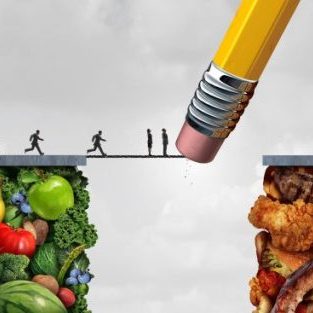
Cleansing Your Life Part 4: Detoxifying Your Diet for a Healthier You
- 1.Cleansing your Life Part 5: Improving Health through Community
- 2.Cleansing Your Life Part 4: Detoxifying Your Diet for a Healthier You
- 3.Cleansing Your Life Part 3: The Importance of Colon Health – How to Detox Your Colon Naturally
- 4.Cleansing Your Life Part 2: Detox from Toxic People and Metals
- 5.Cleanse Your Life Part 1: Detox Your Environment
Welcome back to Cleansing Your Life series 1 of 5. This is Part 4 . OK folks, this is an information-packed area of cleansing but a vital one.
You’ve taken care of your colon (as discussed in Part 3), you’ve looked at your house (as discussed in Part 1), you have eliminated many unnecessary chemicals, you flicked off a few superfluous people (Part 2) and you have looked at your work/life balance. Now let’s look at another factor, in fact, the main factor in cleansing inside and out. Diet. Now by this, we are not discussing restriction. What we are looking at is the kind of foods that you feel you either can’t give up (maybe they are foods your parents always ate) or maybe foods of convenience.
Fruit and Fructose: The Natural Sweeteners Your Body Needs
With food or ‘diet’, we are looking at your overall intake. In a world gone mad and controlled by mainstream media, multi-national companies, and brand names, we are often led to believe that whole foods (fruits and vegetables) can be detrimental to our health. Nothing could be further from the truth. The unending fear of fruit out in the world is beyond ridiculous.
Fruit is such a complete food. It’s the only food that comes in its own wrapper, you don’t need to put it in a bag, it grows on the tree, and doesn’t have to be organic (if you can afford it great). A tree is still going to grow an apple, a banana, a lemon, a tomato, etc. and it’s going to be a perfect entity, a perfect gift from nature.
Fruit is a healer of all bodies and if you are being told you are allergic to fructose, you’re actually allergic to high fructose corn syrup, not fructose itself. Fructose comes from fruits and vegetables, it is actually a natural form of glucose that the body needs in order to work. We need glucose, if we don’t take in glucose we die- simple as that!
Saying ‘I can’t have fructose’ is actually frightening because our bodies are designed for fruit and vegetables. The sugar (fructose) found in fresh food is easily and readily converted into fuel not put into fat storage. Many ‘professionals’ talk about the blood sugar spike you get from fructose. Blood sugars spike when eating nearly every food! That’s the process that alerts the pancreas to release insulin. This is a normal and natural body process. Fruit and vegetables do change the blood sugar profile temporarily but your body knows what to do and will adjust your hormone profile accordingly to break them down.
Altered foods (man-made) change your blood sugar profiles permanently. Fruit and vegetables are what grows naturally. If you eat the way nature intended you won’t be sorry. Eliminating all fruits & vegetables out of your life and substituting a man-made product is ridiculous.
Sadly, many doctors are on this kick about fructose being bad. Fructose isn’t bad glucose, it can be bad if it’s a man-made glucose (high fructose corn syrup) which is in all packaged foods. This is bad for you because the body can’t break it down and it’s quite toxic. You’ve got lots of other sources of sugars like sucrose (which comes from cane sugar). Sucrose is what you put in tea and coffee and is often treated with an abundance of chemicals in the processing plants to make it available in a form that you are sold in the shops, that’s bad for you!
Sugar Cravings: How to Satisfy Your Sweet Tooth Naturally
I hear many people talk about having sugar cravings. These are actually influenced by your overall food intake but if you genuinely feel the need for sweetness in your tea or coffee, here’s my top tip. Try putting a drop of agave syrup (found in all good health food stores, it is made from two different types of cactus plants) in your tea or coffee to satisfy your sweet cravings. Remember, everything in moderation!
If you truly do have sweet cravings, try eating a banana a day or some grapes. You’ll be getting that natural fructose and that’s the sweetness that you need. Other good sources of sweetness are mangoes, watermelon, plums, and pineapple. These will help you satisfy your sweet cravings while nutritionally boosting your body and helping eliminate dis-ease. Notice I don’t mention berries here. Berries are great if they are organic. I mentioned earlier that foods need not be organic. Berries are sadly the most farmed fruit with chemical cocktails. The toxicity in many berries that are commercially available is too high when you are trying to get well or cleanse. You can, however, buy frozen organic berries in one-kilogram packets. It always pays to have these in your freezer to add to smoothies, salads, desserts and the like.
Salt Cravings: The Healthy Way to Satisfy Your Salty Needs
You’ve satisfied your sweet craving but now you feel you have a salt craving. Many of us do. If you’ve got a salt craving (like I do) you may actually want to suck on a little piece of Himalayan or Celtic Sea Salt. I put a small piece under my tongue as soon as I feel that craving coming on and that stops me going to the shop and buying some potato chips. Potato chips used to be what I sought constantly because I’ve always had a salt craving. The body will crave salt often because your muscles need a range of salts in order to function (just as we need glucose for life we also need some salt).
The Hidden Dangers of Animal Products in Your Diet
Now, let’s look at a major factor in toxicity in your diet. It always astounds me how we can so easily get sucked into marketing and think that things like the ‘food pyramid’ can be taken as gospel. The biggest factor in toxicity is the intake of animal products. Let’s take a closer look at these.
Animal Meat
Meat, commonly referred to as steak, sausages, ribs, schnitzel, etc. How this really should be referred to as: processed dead animals that in the processing have been injected with dyes, and filled with coagulants, bacteria, feces, antibiotics, poisons, neurotoxins, heavy metals, chemical hormones, industrial runoff, parts from a totally different animal, steroids and many more. The most common chemicals found in meat (including fish and chicken) are Arsenic, Mercury, Sodium Benzoate, Ractopamine (an asthma-like drug), Nitrates, Tilmicosin (an antibiotic not fit for human use), Sulfites, Carbon Monoxide, Copper, LMP 102 (a viral cocktail made of 6 different species of virus), Thrombin (meat glue) and bacteria such as salmonella, listeria, staphylococcus, clostridium, and Klebsiella. Now, if you still feel that meat is a ‘must have’ in your diet, you are much better off sourcing only organic and locally produced meats. They will still have many of the above but you may at least be able to avoid a few of the nasties. Ask local producers questions like:
What do your cows eat? How many animals are in each field? Are they fed commercial-grade foods or do they feed on a wide range of fruits, vegetables, and other food sources?
Why ask these? Well, if you buy grass-fed, remember that grass is treated with a chemical called glyphosate (commonly known as Roundup). Cows eat grass, grass is looked after by the use of glyphosate. Now that gets into waterways also via runoff. So, the cows eat the grass that has been treated with roundup so the fields have more grass and fewer weeds (many weeds are actually good for you and the cow). The cow eats the grass (and chemicals) and is then slaughtered to become your meat. The chemicals ingested in the field are still inside the tissues of the animal. They aren’t broken down or eliminated. So, you are about to buy a tray of meat with all the additional chemicals AND glyphosate.
Now, the human body cannot break down glyphosate (or the other chemicals either) and it sits in your filtration hub- the liver and your kidneys. Over time (if you’re lucky to have time, chemicals affect people at different rates but they will affect you), your organs will fail under a toxic load, and at the very least, you will get blockages of the gallbladder or kidney stones or your body will become so laden with toxicity that you will be diagnosed with a terminal dis-ease (the most common being cancer).
I hear a lot of people say ‘But I love eating meat and can’t or won’t give it up’. Before we even get into the debate of animal rights, let’s look at another factor in meat production. You steered away from ‘grass-fed- meat because of the chemical load but you are tempted to buy ‘grain-fed’ meats. This is no better option! The animals are fed grains that are also treated with glyphosate and other chemicals such as chlorpyrifos-methyl, malathion, chlorpyrifos-methyl+deltamethrin, methoprene, pirimiphos-methyl, pyrethrins+piperonyl butoxide, silicon dioxide, cyfluthrin, aluminum phosphide and many more. We hear so much about ‘gluten intolerance’. Many people are not actually gluten intolerant at all but are pesticide and fungicide intolerant instead.
If, for some reason, after reading this you still want to eat meat, I suggest you eat goat meat. Goats are grazers that will consume almost anything. They eat weeds, flowers, seeds, nuts, etc. Goats seek food sources with bigger root systems, different leaf systems or structures that take up less chemical load.
If you know where the goat you eat is raised and trust that they are not eating grass or any feed laden with chemicals- you may be eating a healthier choice BUT remember that any animal farmed for meat or any other food product is an animal that has been killed and farmed under stress. In the case of meat, the stress increases the viral and toxic load that is stored in the meat you are consuming. No animal wants to die but in a farmed situation the stress is compounded and stored in that animal. Being hunted by humans also does this. If you wish to argue that animals hunt and kill other animals, look at the speed of the chase and the speed of the kill. They are being consumed by the predator at the time of killing without being cooked, treated, marinated, shot with metal implements, or any other factor that leads to time between the kill and the feed. Nature is indeed a miraculous and wonderful thing. Predators and prey have for hundreds of thousands of years been in the circle of life. Humans are a relatively recent addition and by far imbalance this circle.
Milk and Dairy: What’s Really in That Glass?
When we talk about toxins, we really talk about pollutants. You wouldn’t knowingly suck on a bottle of sludge that you skimmed out of the gutter but when drinking milk or eating dairy products, that’s in effect what you are doing. A simple breakdown of one glass of milk contains bovine growth hormones, 135 million pus cells, calcium from the bones of the animal, an acidic protein that leeches 51 milligrams of cholesterol and 16 grams of fat, antibiotics (such as triclosan), painkillers (such as ibuprofen and naproxen), anti-inflammatory drugs (such as niflumic acid, mefenamic acid, and ketoprofen), hormones (including 17-betaestradiol), anti-depressants (such as prozac), high caloric index and feces. This a snapshot of only some of the nasties found in just one glass of milk. Other dairy products have other chemical cocktails added to them in addition during the manufacturing process such as rennet, wood pulp, plastics, coagulates, and neurotoxins.
With any hidden illness (known commonly as chronic illness) the toxic load in food is the biggest contributor. Remember that comment “but you don’t look sick’? What people are really saying is “I can’t see the chemical load or pollutant load that is debilitating you”. Whether it’s Diabetes, thyroid disease, Hashimoto’s, hypothyroid, chronic fatigue, MS, or any of the other chronic illnesses we hear about daily, if you consume animal products (especially dairy) you are feeding the dis-ease. Take note, you’re not a baby cow and do not require cow’s milk, apart from being a horrifically cruel industry, only baby cows should drink cow’s milk as humans cannot break down the compound in milk. We looked at goats earlier. If you feel the need to drink another animal’s milk (farmed animal milks are all much of a muchness in chemical compositions and cruelty procedures), goat milk is the closest in composition to human milk. It’s the closest to human breast milk that we can get. At some zoos, in fact, they give some of the baby primates goat milk.
When looking at cleansing or healing a chronic illness, we need to look at the combinations of fats and sugars in foods. Any animal milk will contain lactose (the sugar found in milk) and the lactose combined with fats leads the human body to distress as it cannot break down this composition. Chronic illness often flares when dairy is consumed. Dairy when tested shows up as an alkaline product (we’ve all heard that an alkaline body is a healthier body), however, when consumed, dairy becomes highly acidic and promotes dis-ease. At the earliest point of consumption and digestion, reflux or IBS symptoms can be experienced. Ignored over time, the body looks for more dramatic ways to warn you off the consumption of the product.
Read the Labels: The Importance of Knowing What You Eat
When and if in doubt about what you’re putting in your mouth, read the label. That’s not to say that the label will tell you the truth you seek though. In Australia, we are the only ‘Western nation’ not to have mandatory labeling of Palm Oil. Now you want to know what palm oil is?
Palm Oil is a vegetable oil derived from the mesocarp (reddish pulp) of the fruit of the oil palm, primarily the African oil palm (Elaeis guineensis), and to a lesser extent from the American oil palm (Elaeis oleifera) and the maripa palm (Attalea maripa). It is an ingredient that is not labeled as Palm Oil but often as vegetable oil, emulsifier, beta carotene (nothing to do with the real beta carotene found in carrots), fatty acids, glycerol esters, vegetable gum, vegetable extract, etc.
In fact, it has been found that to date, there have been over 200 alternative names listed on labels for Palm Oil. In order to make Palm Oil, a hundred MCG (Melbourne Cricket Ground) sized fields a day of rainforest are being destroyed to make way for Palm Oil plantations. Picture the MCG, it’s a fairly big place. Now picture a hundred of those being cleared a day, cleared of natural rainforest through Southeast Asia.
Many animals have gone and are being declared as extinct due to this scourge of greed thanks to the destruction of key habitats. Now you’re probably thinking, ‘It’s progress, the way life goes’. To harvest palm oil what manufacturers are actually doing is planting the palm trees, harvesting the kernels to get the oil, and then burning the plantation down to the ground so nothing else can grow there for the next five years.
Some plantations are being farmed in a sustainable manner and are being certified as such. If you had the choice by reading a label, you could choose certified, sustainable Palm Oil. However, if you consume an ingredient that is found in packed foods but also in cosmetics, paint thinner, detergent, biodiesel, etc. would you consider that a healthy product for consumption?
Let me put it to you like this, Palm Oil is in household paint, it’s in products that you put in your car such as fuel additives, it’s in car wash soaps but it’s also in the foods that you are feeding your children and yourself. How can a product that can be in so many different items be good for you? If we were meant to be eating Palm Oil, it would be a piece of fruit that we could take off the tree and consume raw. Remember that all fruit comes in its own packaging. Fruit is a whole and complex organism that’s ready for us to eat and bioavailable to us.
Now you’re reading your labels and know to steer away from Palm Oil, you are looking at other oils in products. Your packet may read Soy or Soy Lecithin. These are genetically modified and best to stay away from. Most soy products are created in conjunction with chemists not nature. Some products may say they contain canola or sunflower oil, again these are GMO and best to avoid. If the packet states Almond Oil or Safflower Oil, they are more safe than other products. It is actually quite difficult to genetically modify these two plants. When dealing with chronic illness, canola is the oil you really must try to avoid as the canola field is a haven for mould, pesticides, fungicides, and other forms of toxicity.
Fish: Is It Really a Healthier Option?
By now, you may be asking yourself “What can I eat to stay healthy and clean from the inside out?” If you immediately thought of seafood, let me clear up that for you. It is not natural for humans to be consuming animals from the sea. In times gone by, we conditioned ourselves to think that sea animals were healthy. Actually, they are as detrimental to your health as land animals are as a food source. Seafood is extremely high in Mercury and other heavy metals. Our oceans are full of sewage and industrial waste, not to mention that oceans aren’t separated by a barrier between them. Radioactive runoff and leakage enter one ocean and are blended with them all and widespread. Seafood comes from this pool of radioactivity and is delivered to your fishmonger with this toxic time bomb within it.
If you’re going to eat fish, you need to make sure it’s a river-caught fish and that it’s wild not farmed. Farmed fish are fed pellets that are high in toxicity also. However, even river-caught fish are susceptible to glyphosate run-off as discussed earlier when we looked at meats. The only organisms that can disperse and break down glyphosate and its cohorts are plants with complex venous systems (grass is not one of these). Many people will recommend that you to consume large amounts of EPA and DHA. They may suggest that you consume various forms of seaweed to reach your essential oil needs. Remember that many of these seaweeds are farmed in the toxic oceans and when you chew them, they release toxicity into your mouth.
That’s the end of Cleansing Your Life Part 4. We hope we haven’t scared you off! It’s a lot of information to process. No one can do things perfectly all the time but it’s vital that you are aware of what these foods are doing to your body, especially during a cleanse. This way step by step you can achieve a healthier lifestyle and feel better from the inside and out.
For more health tips click here for Cleansing Your Life Part 5.



